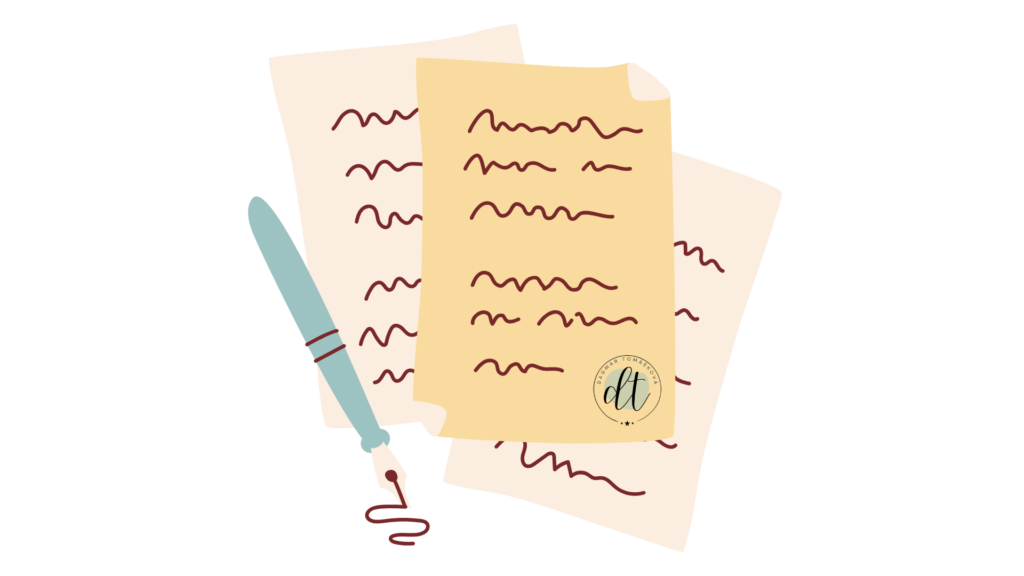
Ep.54: How Much Do You Know About Native Americans?

Today we will talk about the history and problems of Native Americans because it is an important part of American history and many people don’t know much about it which I think is a shame.
LISTEN TO THE EPISODE HERE:
will be here soon


WRITTEN TRANSCRIPTION OF THE PODCAST
Hello and welcome back to my podcast My Life and Other Funny Stories! I’m Dagmar Tomášková, your friendly English tutor and coach, and I am here with another interesting episode. Don’t forget you can find the transcription and vocabulary list in the notes of the podcast or on my website.
Today, we’re diving into a topic that’s a little different from our usual funny and language episodes—but don’t worry, we’ll keep it light. We’re talking about the history of Native Americans, yes we call them Indians but it is not a correct way to call them, so I will only talk about them as Native Americans. It will be an episode with a little bit of an advanced vocabulary so just a reminder that you can find the vocabulary list in the description.
As I said in many episodes before, I love history and the history of Native Americans followed me through my whole university years. I had classes about their cultures and traditions, about their history, about their problems. And the more I learned about them, the more fascinating they became to me. I was quite surprised at how little I knew about them before I went to the university.
Now, before we get into it, let’s set the scene. Picture this: It’s thousands of years ago, long before Columbus accidentally “discovered” America—because, you know, apparently a whole continent of people already living here didn’t count as being discovered. Native Americans were thriving on this land, with diverse cultures, languages, and traditions. And I mean, thriving. That means being very successful and developing well. But of course, as history would have it, things were about to get a whole lot more complicated.
The Origins of Native Americans
First, let’s look at the origins of Native Americans. So, who were the first Native Americans, and where did they come from? Well, most historians and archaeologists agree that the ancestors of today’s Native Americans came to North America from Asia through a land bridge called Beringia. This was during the last Ice Age, around 15,000 years ago, when sea levels were lower, and you could walk from Asia to North America on foot. I guess it was a little bit of a hike but they managed it quite well. Imagine walking across an icy bridge that connected Russia to Alaska. That’s like walking from your kitchen to your living room, except it takes 500 years and you’re freezing the whole time.
Once they got here, these early peoples spread out across the continent and developed unique cultures and ways of life. Some settled in the forests, others in the deserts, and some even in the swamps. A swamp is an area of very wet land with wild plants growing in it. And no, they weren’t just sitting around waiting for Columbus to show up. They were building sophisticated societies with their own systems of government, agriculture, and trade.
The Arrival of Europeans
Fast forward to 1492. Columbus sails the ocean, and things start to go downhill from there. The arrival of Europeans marked the beginning of a pretty tough time for Native Americans. There were diseases, wars, and forced relocations— that means that Europeans forced the Native Americans to move from their land into reservations…you name it, they had to go through it. The Europeans brought with them all kinds of fun new things like smallpox and the concept of “ownership,” which really messed things up for the people who had been living here for thousands of years.
And speaking of ownership, let’s talk about the concept of land. For many Native American tribes, land was a communal resource—something that belonged to everyone and no one at the same time. Then the Europeans showed up and were like, “This is mine now,” putting flags all over the place like it was a game of Monopoly. But you know, with way more serious consequences.
The Trail of Tears
One of the most infamous chapters in this history is the Trail of Tears. Infamous means being well-known or famous for something bad. In the 1830s, the U.S. government decided it would be a great idea to forcefully relocate thousands of Native Americans from their lands in the southeastern United States to areas west of the Mississippi River. The idea was to open up more land for European settlers—because, you know, why not just take more?
This march or journey that the Native Americans were forced to walk was known as the Trail of Tears and it resulted in the death of thousands of Native Americans due to diseases and starvation. It’s called the Trail of Tears for a reason— they were forced to leave their home, walk hundreds and hundreds of miles with nothing but the clothes on their back, losing family members who were not strong enough along the way. It’s one of the darkest moments in American history.
Native American Resistance
Despite everything, Native Americans didn’t just give up and let this happen. There were many moments of resistance—some well-known, others not so much. There were famous leaders like Sitting Bull and Geronimo, who fought to protect their people’s way of life. These leaders and their followers fought bravely, knowing that their way of life was in danger.
One of the bigger examples of Native American resistance was the Battle of Little Bighorn in 1876. General George Custer thought it would be a great idea to attack a much larger force of Native American warriors led by Sitting Bull and Crazy Horse. Spoiler alert: It didn’t go well for Custer. It was one of the rare victories for Native Americans during this period, but unfortunately, it didn’t stop the European settlers from taking even more land.
You see, it was very hard for the Native Americans to win as they were outnumbered and usually fought with bows, arrows or knives while the Europeans had guns.
The Reservation System
As the Europeans wanted to expand the United States to the west of the continent, the government started placing Native Americans on reservations. They just forced Native Americans to leave their home and said “Hey, we’re going to take your land, but don’t worry—we’ve got this tiny, isolated piece of land for you way over there. Go,go,go. Good luck surviving!”
The reservation system was supposed to be a solution to the “Indian problem,” but it ended up being another form of oppression. Oppression is an unjust or cruel use of authority or power. The land was often unsuitable for farming so it was very hard to grow any crops or other sources of food there, there were very few animals to hunt, and the cultural traditions of many tribes were destroyed. It’s like someone giving you a “gift” that actually makes your life a living hell—and then expecting you to be grateful for it.
Native American Culture and Contributions
But here’s the thing: Despite centuries of struggles, Native American cultures didn’t disappear. Far from it. Today, there are 574 recognized tribes in the United States, each with its own unique culture, language, and traditions. And let’s not forget the contributions Native Americans have made to American culture…
They came up with many words and things that were unknown to the Europeans. For example, words like “canoe” and “moose” to foods like corn, potatoes, and chocolate (yes, chocolate!), Native American influence is everywhere. And let’s be honest, can you imagine life without chocolate? Not me.
The Modern Native American Experience
It is hard to look at the history of Native Americans with a smile on my face. It is truly heartbreaking how they were treated and destroyed. They are still fighting for their rights and working to preserve their cultures. Many tribes are trying to get back their languages and traditions, and there’s a growing movement to recognize and honor the history and contributions of Native Americans.
However, there are so many problems that they have to face. Issues like poverty, lack of access to healthcare, and discrimination are still very real for many Native American communities. There were so many crimes against Native Americans but because of racism, the police didn’t care.
And with these problems following them from generation to generation, new problems such as alcohol addiction or gambling have been growing in the tribes for dozens of years now. Their homes have been destroyed and their cultural heritage stolen and put into museums. Did you know that Native Americans are trying to get back the remains of their ancestors that are hidden in museums and universities? But unfortunately, it is usually unsuccessful. The whole system was built against them.
Before the Europeans came, the number of Native Americans was estimated around 50 million people. Some sources say more than 8 million, some say even 100 million, it is hard to guess as they began dying so quickly after the arrival of Europeans.
Today, the number of Native Americans is estimated at between 4 and 7 million and about a third of them live in serious poverty.
So, what can we take away from this? Well, first of all, history isn’t just something that happened a long time ago. It is now, it’s ongoing, still happening.
And secondly, Native American history is American history. It’s not just a side note or a chapter that can be skipped over. It’s an important part of the story of this country, and it deserves to be told with respect and honesty. It is important to talk about all the things that the books won’t tell us.
Thank you for joining me on this journey through the history of Native Americans. I hope you’ve learned something new today.
If you enjoyed this episode, don’t forget to give it a five-star rating and share it with your friends. And as always, you can find the transcript and vocabulary list in the podcast notes. Thanks for listening, and I’ll see you next time!

VOCABULARY LIST
Native Americans – původní Američané
reminder – připomínka
set the scene – nastavit atmosféru
picture this – představte si toto
thriving – vzkétající / rozvíjející se v dobrém směru
origins – původ
ancestors – předci
Ice Age- doba ledová
on foot- pešky
spread out across – rozšířit se napříč
swamp – bažina
go downhill from there – jít od té chvile z kopce
communal resource – společný/ sdílený zdroj
consequences – následky
Trails of Tears – cesta slz
forcefully – násilně
march – pochod
to be forced – být donucet
despite everything – navzdory všemu
resistance- odpor / odolnost
leaders – vůdci
larger force – větší množství / síla
rare – vzácné
outnumbered – přečíslený
bows – luky
arrow – šípy
unjust –nespravedlivé
cruel – kruté
unsuitable – nehodící se na…
crops – plodiny
hunt – lovit
disappear – zmizet
preserve – zachovat
honor – ctít (někoho)
poverty – chudoba
gambling – hazardovat
heritage – dědictví
to be estimated – být odhadován
skip over- přeskočit